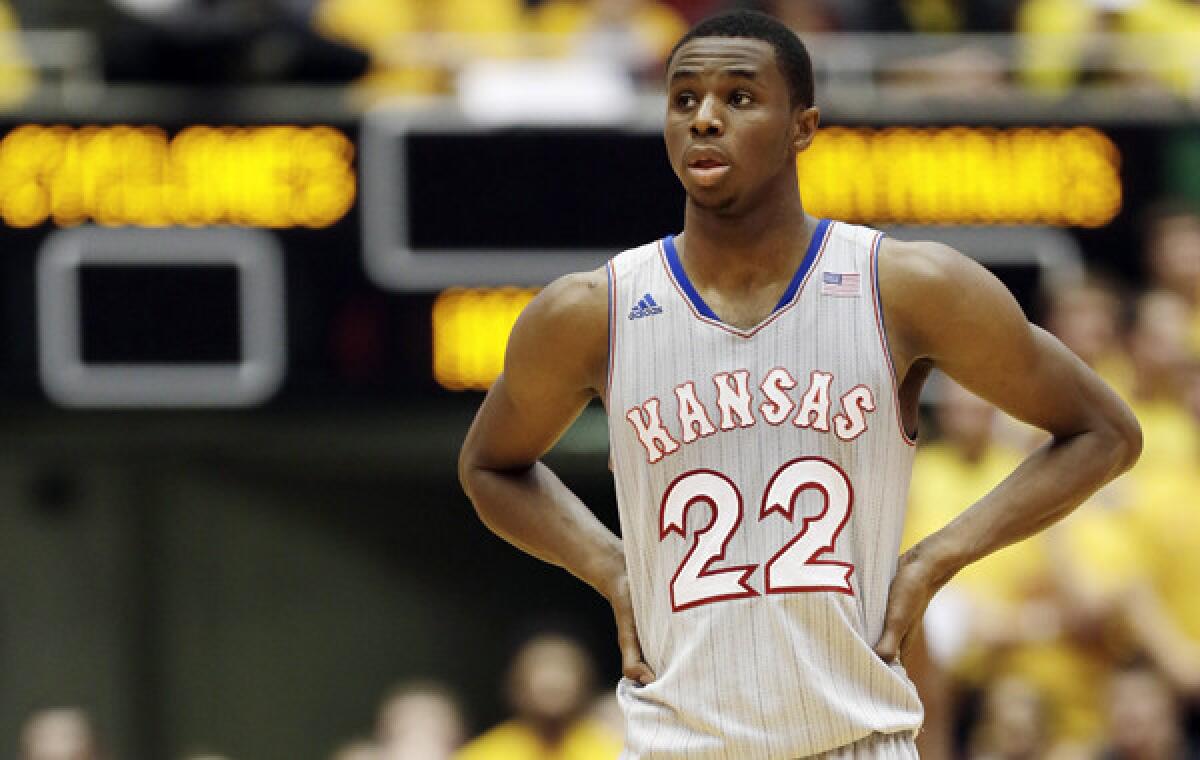NBA draft class might not have instant impact

- Share via
The year is 2017. Somewhere high above an NBA practice court, a general manager stares out a large picture window at his struggling team and sighs.
“I still can’t believe it,” he tells a front-office underling. “Remember that year we tanked and thought it would change everything? Now look at us.”
A belief is spreading in and around the league that the 2014 draft, once more widely hyped than the latest iPhone, may not be all that.
Teams positioning themselves for as many pingpong balls as possible — overtly or otherwise — may be bouncing toward disappointment.
Sure, there are going to be good players available. It’s just that they may not be able to make fringe playoff teams title contenders or elevate awful ones into relevancy.
ESPN draft expert Chad Ford said he expected the draft to produce multiple All-Stars but maybe not a transformational talent a la LeBron James or Dwyane Wade.
That could come as a shock to Sports Illustrated, which put Kansas freshman Andrew Wiggins on its cover before he had soared for his first college dunk, calling him “a once-in-a-generation recruit.”
Now Wiggins isn’t even listed as the top pick on several mock draft boards. At least one has dropped him to third, behind Kansas teammate Joel Embiid and Duke freshman Jabari Parker.
Oops?
“Wiggins is still a very raw prospect, especially in terms of his ballhandling ability, and he’s also a streaky shooter,” said Jonathan Givony, president of draftexpress.com, a website that evaluates top prospects. “So I think you’re kind of looking into what he could develop into long term and not necessarily what he is right now.”
Of course, Wiggins could one-up Parker by actually being in the draft. Parker appears to be vacillating on his decision whether to turn pro unlike Wiggins, who will be the latest player to make a sham-mockery of the college game by leaving after one season.
Some don’t see a franchise savior in the bunch with the possible exception of Parker, a 6-foot-8 forward whose polished offensive skills and physical precociousness make him appear ready to start for an NBA team now.
“With this class, you see potential,” said TNT analyst Steve Kerr, “but other than Parker, I don’t see LeBron-Carmelo [Anthony]-Wade-[Chris] Bosh at the top of the draft, like four guys who are going to come in and make a huge impact. I see one, but that could all change as all these guys develop.”
The newest draft darling is Embiid, a 7-foot freshman who has occasionally upstaged Wiggins with the Jayhawks. Having started to play basketball only at 16, the native Cameroonian has wowed scouts with his potential upside.
That he’s doing it against largely overwhelmed and undersized college counterparts could be an issue.
“He does a couple of things every game that just make you say, ‘Wow!’” Givony said, “but to do that against Dwight Howard and Roy Hibbert, it’s a different thing.”
There are other intriguing players. Former Dallas Mavericks and New Jersey Nets coach Avery Johnson, who has watched many of the best prospects since their days playing with and against son Avery Jr. on the club circuit, compared Kentucky freshman Julius Randle to a combination of Zach Randolph and Lamar Odom because of his blend of size and skill.
Johnson also likened Oklahoma State guard Marcus Smart to Hall of Famer Joe Dumars. There’s also Australian point guard Dante Exum, who has often outplayed his American counterparts in international competition.
“There’s some really terrific talent out there,” said Johnson, now an analyst for ESPN.
It will be years before anyone knows how 2014 compares with the best draft classes of recent decades. The benchmark drafts are generally viewed as 1984 (Michael Jordan, Hakeem Olajuwon, Charles Barkley, John Stockton), 1996 (Kobe Bryant, Allen Iverson, Steve Nash, Ray Allen) and 2003 (James, Wade, Anthony, Bosh).
“The best time to analyze the draft is five years after the draft took place,” said Lakers General Manager Mitch Kupchak, whose team has a first-round pick for the first time since 2007. “You look back and say, ‘Hey, that was a great draft.’ That’s when we’ll know.”
Kupchak counts himself among the believers in a draft that will be held June 26 in New York, saying he believes it will be “excellent.” Not that there’s anything unusual about that.
“I think that’s the case with every draft,” Kupchak said. “There’s always somebody.”
A bevy of middling teams can only hope.
Twitter: @latbbolch
More to Read
Go beyond the scoreboard
Get the latest on L.A.'s teams in the daily Sports Report newsletter.
You may occasionally receive promotional content from the Los Angeles Times.











